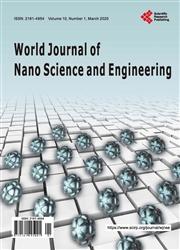Synthesis of a green nano-silica material using beneficiated waste dunites and its application in concrete
引用次数: 57
Abstract
Nano-silica, one of the substances boosting the field of nanomaterials, can be produced by dissolving olivine in acid. The dissolution of olivine is a convenient alternative route to the existing methods of nano-silica production (neutralization of sodium silicate and flame hydrolysis) because the olivine dissolution is a low temperature process making this method cheaper and greener. Furthermore, this process can use waste olivine materials for the production of nano-silica. The produced nano-silica has a specific surface area between 100 and 400 m 2 /g; a primary particle size between 10 and 25 nm, which is agglomerated in clusters; and an impurity content below 5 wt.%. In addition, olivine nano-silica can be classified as a pozzolanic material with an activity index of 101%. The optimum replacement level of olivine nano-silica in conventional vibrated concrete is around 5% by volume resulting in: 1) a compressive strength increase of 20%; 2) a CO2 emission reduction of 3%. Therefore, the use of the olivine nano-silica in CVC does not only improve the compressive strength but also reduce the CO2 emissions.废砾石选矿合成绿色纳米二氧化硅材料及其在混凝土中的应用
纳米二氧化硅是推动纳米材料领域发展的物质之一,可将橄榄石溶于酸中制备。橄榄石溶解是现有纳米二氧化硅生产方法(水玻璃中和和火焰水解)的一种方便的替代途径,因为橄榄石溶解是一个低温过程,使该方法更便宜,更环保。此外,该工艺可以利用废橄榄石材料生产纳米二氧化硅。制备的纳米二氧化硅比表面积在100 ~ 400 m2 /g之间;初级粒径在10 - 25nm之间,呈团簇状;杂质含量低于5wt .%。此外,橄榄石纳米二氧化硅可归类为火山灰材料,活性指数为101%。常规振动混凝土中橄榄石纳米二氧化硅的最佳替代量为5%左右,可实现以下效果:1)抗压强度提高20%;2)二氧化碳排放量减少3%。因此,在CVC中使用橄榄石纳米二氧化硅不仅可以提高CVC的抗压强度,还可以减少CO2的排放。
本文章由计算机程序翻译,如有差异,请以英文原文为准。
求助全文
约1分钟内获得全文
求助全文

 求助内容:
求助内容: 应助结果提醒方式:
应助结果提醒方式:


